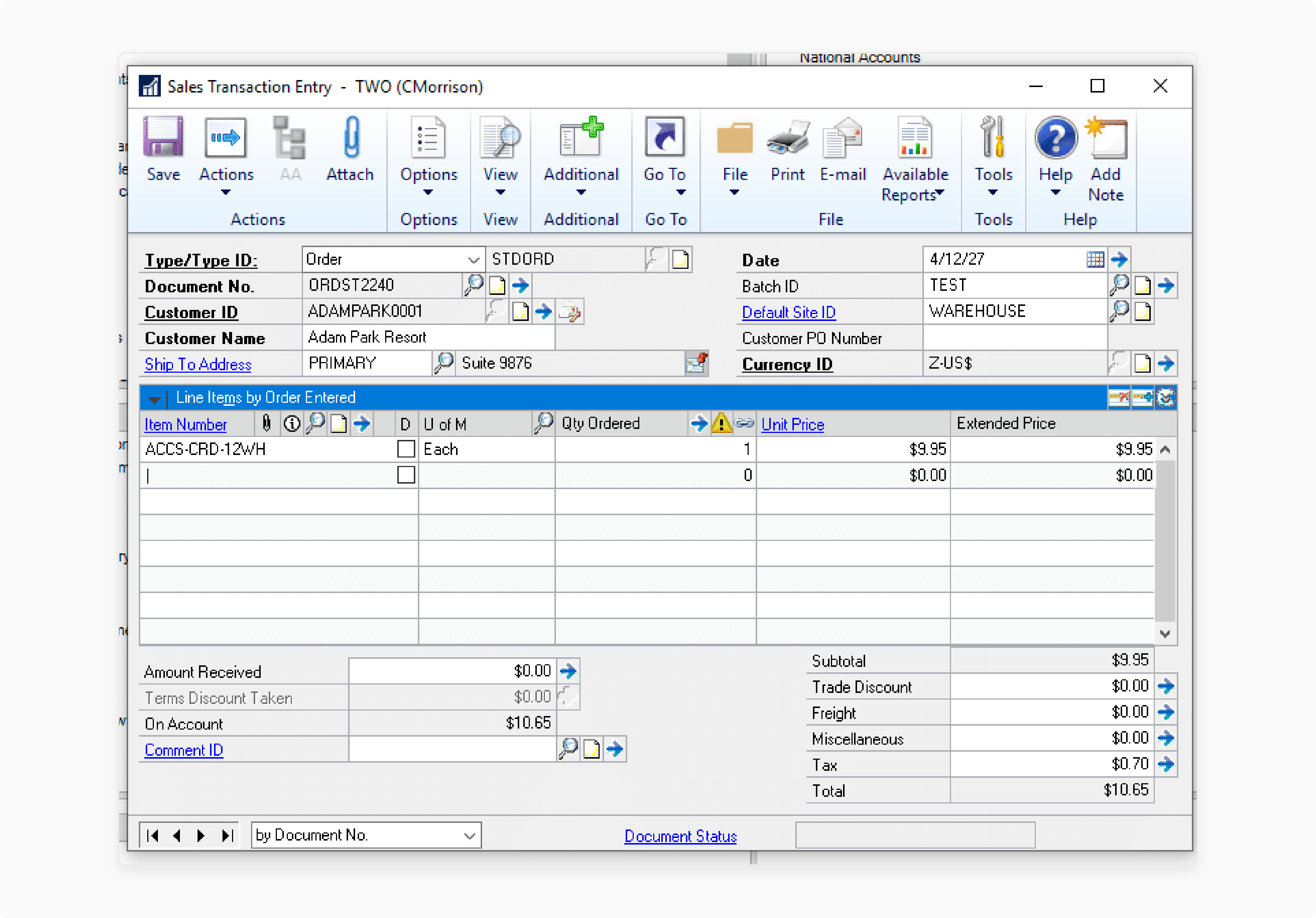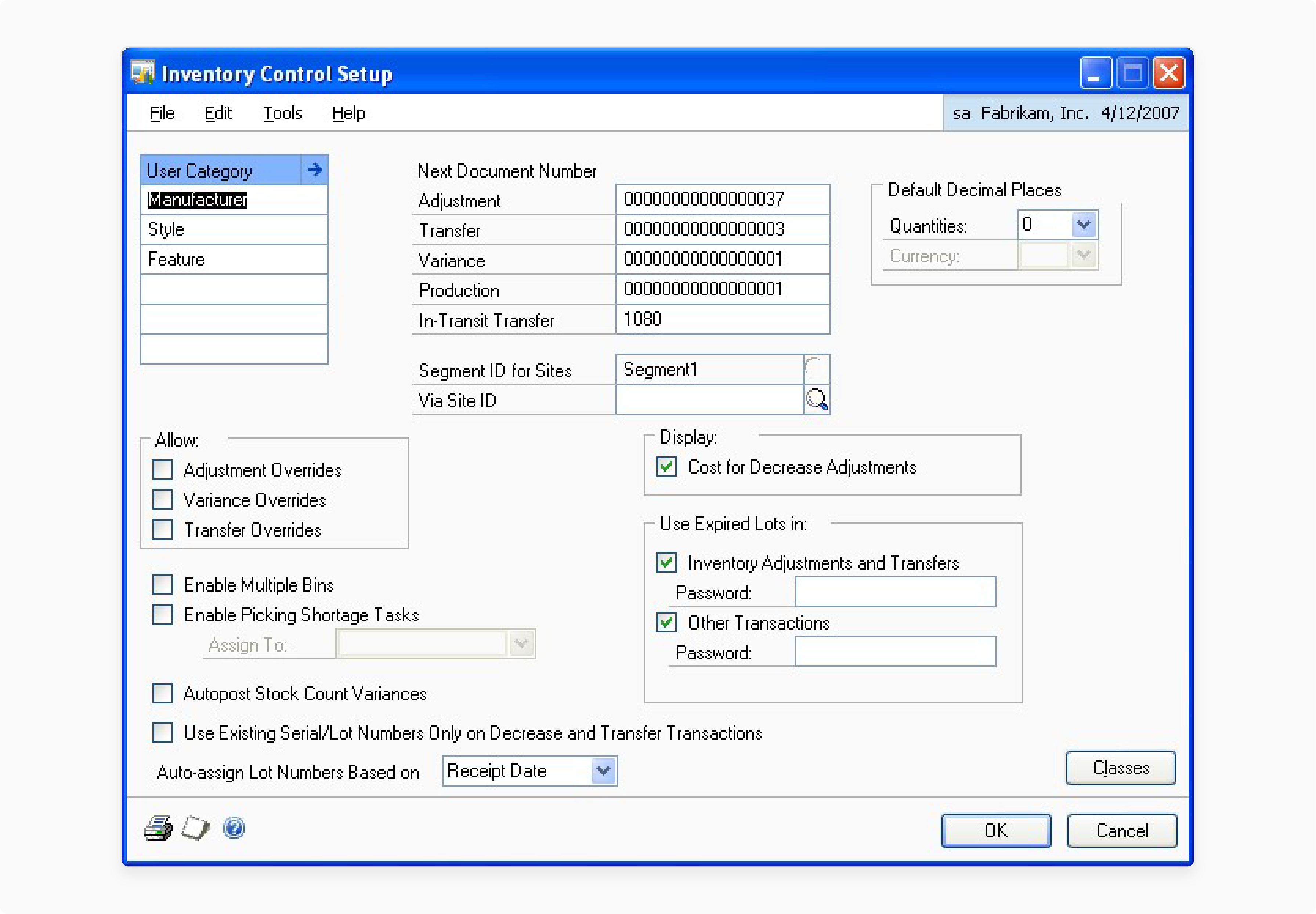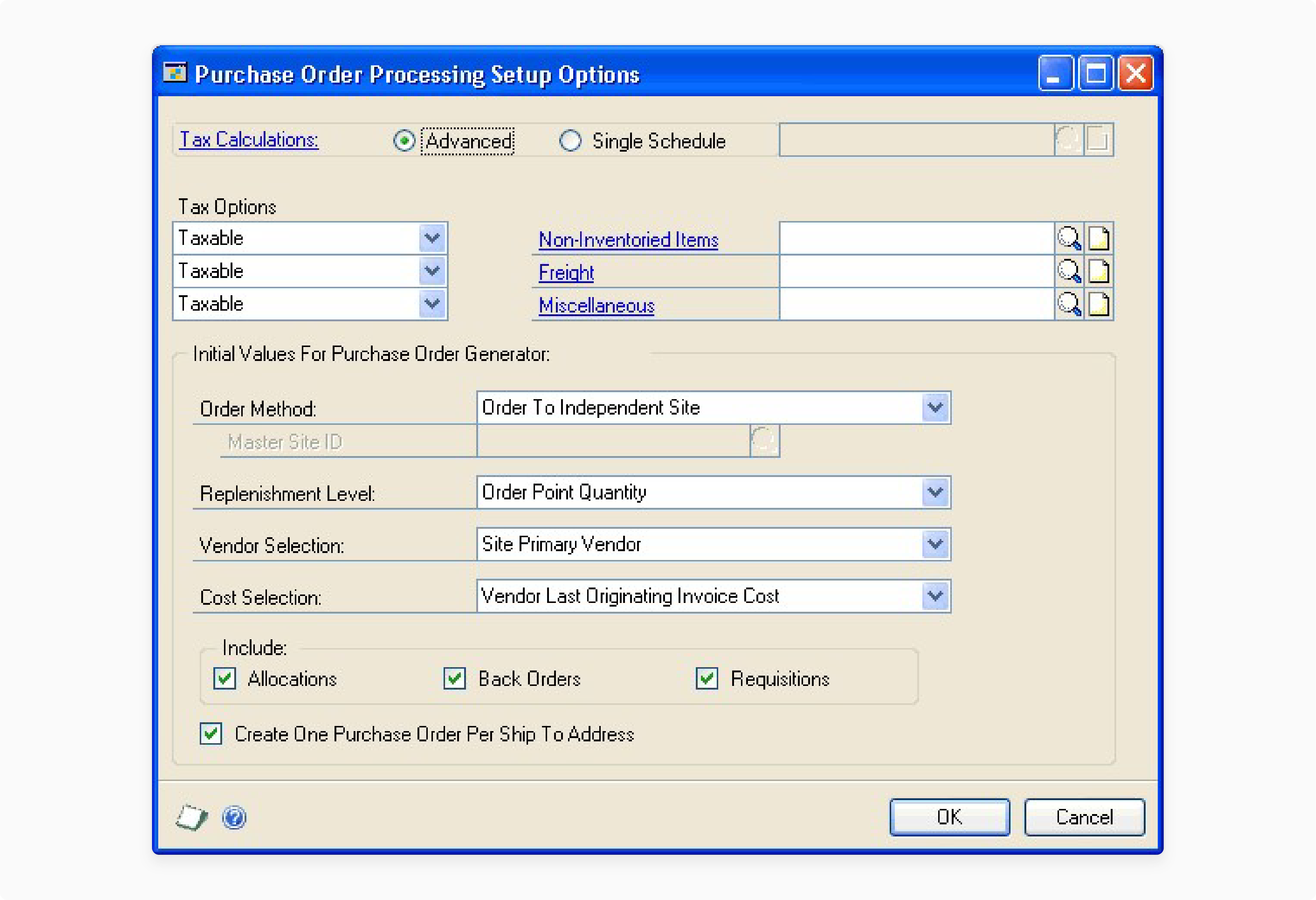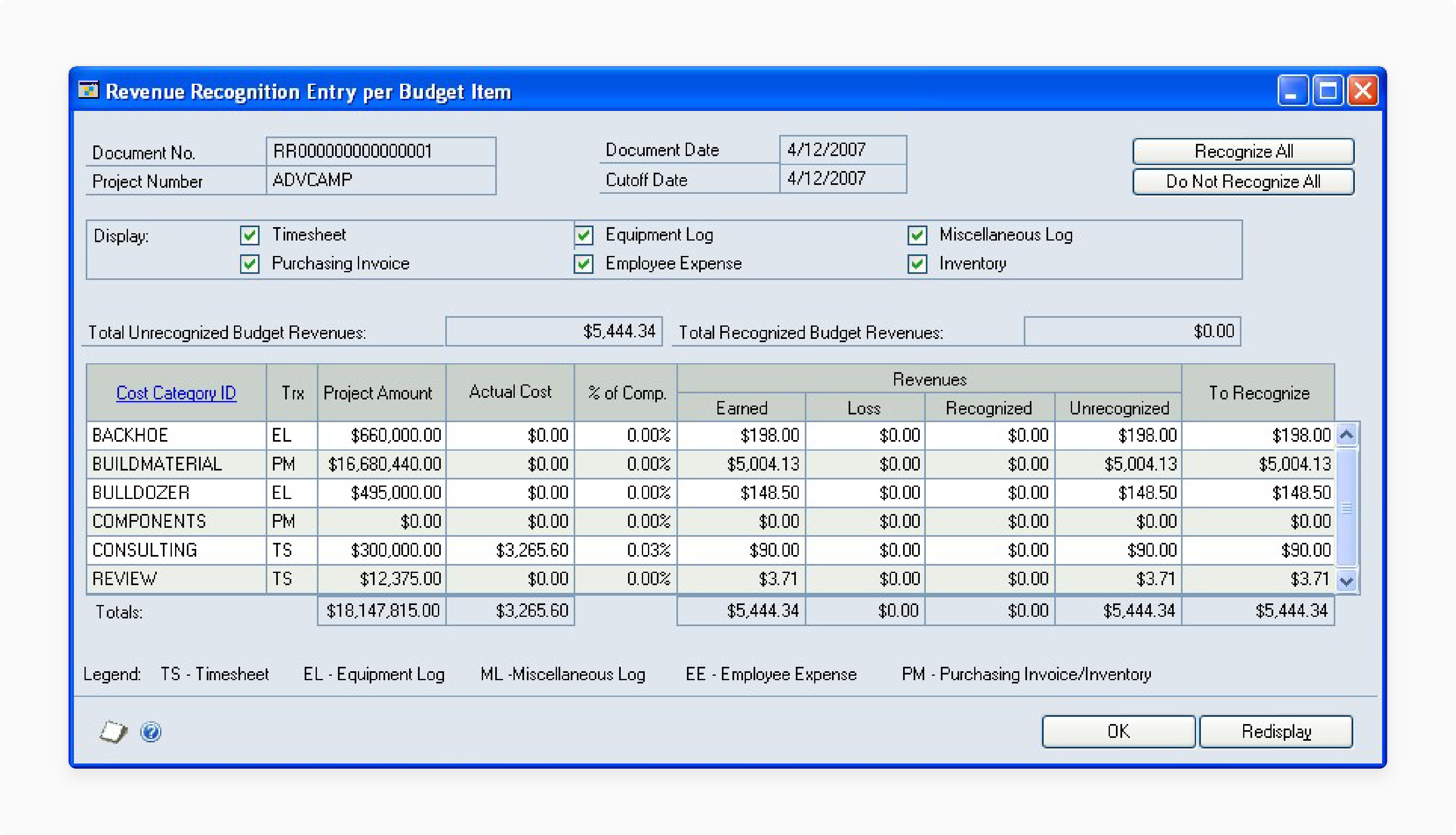
Microsoft GP Magento 2: Benefits and Key Modules
Looking to improve your workflow by integrating Microsoft GP with your Magento 2 store? Microsoft GP Magento 2 connects your enterprise resource planning (ERP) system with your eCommerce platform.
In this article, we will explore the benefits and key modules that can be integrated.
Key Takeaways
-
Overview of Microsoft Dynamics GP.
-
Integrating Microsoft Dynamics GP with Magento 2 streamlines key business processes.
-
The work synchronization between the two platforms ensures smooth data flow.
-
Several key modules can be integrated to improve various business functions.
-
Benefits of Integrating Microsoft Dynamics GP with Magento 2
-
How Does Data Synchronization Work Between Microsoft Dynamics Gp and Magento 2?
-
Key Modules in Microsoft Dynamics GP That Can Be Integrated With Magento 2
What is Microsoft Dynamics GP?
Microsoft Dynamics GP is an enterprise resource planning (ERP) software designed for small and mid-sized businesses.
Microsoft GP(formerly Great Plains Software) helps organizations manage various business functions. It helps companies streamline their operations by:
-
Automating processes
-
Enhancing data accuracy
-
Improving decision-making
It is through real-time reporting and data analytics.
The software is customizable and integrates with other Microsoft products. These include Microsoft Office 365 and Power BI.
It is a popular choice for businesses looking to improve efficiency and scalability.
Benefits of Integrating Microsoft Dynamics GP with Magento 2
1. Automated Data Synchronization
-
Automatically sync data between Magento 2 and Microsoft Dynamics GP. The data include:
-
Orders
-
Inventory levels
-
Shipping details It reduces manual data entry.
-
-
Ensure that all changes are updated across both systems in real-time. It helps minimize errors and delays.
-
According to a study by Wasp Barcode, 43% of small businesses either don’t track inventory or use a manual process. It leads to inefficiencies.
2. Improved Inventory Management
-
Synchronizing inventory data ensures that your Magento 2 store always reflects the correct stock levels. It is based on updates from Microsoft Dynamics GP.
-
Real-time updates prevent overselling and backorders. It is by maintaining accurate inventory records. It helps improve customer satisfaction.
-
A fashion retailer using Magento 2 syncs its inventory with Dynamics GP. It ensures that customers only see products that are in stock. If stock runs low, the inventory update in GP is reflected immediately in Magento.
3. Efficient Order Management
-
Orders placed on Magento 2 are automatically pushed to Microsoft Dynamics GP for processing. It helps reduce time spent on manual entry.
-
Syncing orders directly to your ERP helps streamline the order fulfillment process. It ensures quicker shipping and better customer service.
-
According to Epsilon, 80% of consumers are more likely to purchase when brands offer personalized experiences.
4. Enhanced Financial Accuracy
-
Automatically generate invoices and update payment records in Microsoft Dynamics GP. It is when orders are placed in Magento 2. It helps improve financial tracking.
-
With automated processes, businesses can minimize the risk of human errors in financial data entry. It results in more accurate financial reporting.
5. Better Customer Experience
-
With customer data synced across both systems, you can provide a more personalized experience. It includes targeted marketing and customer service.
-
Customers can access up-to-date order statuses and shipping information. It improves transparency and trust in your store.
-
A multi-store eCommerce retailer uses integrated systems to track sales performance across all locations. They analyze data from both systems to:
-
Optimize marketing spend
-
Improve stock replenishment
-
Adjust pricing strategies
-
6. Scalability and Growth
-
As your eCommerce business grows, integrate Magento 2 with Microsoft Dynamics GP. It ensures that your back-office processes can scale along with your sales volume.
-
Automation frees up resources. It allows your team to focus on strategic growth rather than manual tasks.
-
Research from Aberdeen Group shows that businesses using ERP-integrated eCommerce platforms report a 14% reduction in operational costs. Then compared to those using non-integrated systems.
7. Better Data Insights
-
Syncing data between Magento 2 and Microsoft Dynamics GP provides businesses with a complete view of their:
-
Inventory
-
Financial performance
-
Real-time data helps businesses make faster and more informed decisions. It is based on accurate insights from both platforms.
How Does Data Synchronization Work Between Microsoft Dynamics Gp and Magento 2?
1. Automated Data Flow
Data synchronization involves setting up a connection. It allows Magento 2 and Microsoft Dynamics GP to share data automatically. The connection can be facilitated using either third-party integration tools or custom APIs. The data flows in two directions:
-
Magento 2 to Microsoft Dynamics GP: Data are sent from Magento 2 to Microsoft Dynamics GP for further processing, such as invoicing and order fulfillment. These include:
-
Sales orders
-
Customer information
-
Product details
-
-
Microsoft Dynamics GP to Magento: Several details are sent from Microsoft Dynamics GP back to Magento, including:
-
Inventory updates
-
Order Status
-
Shipping
-
It ensures the eCommerce store reflects accurate information.
2. Data Types That Are Synced
Key data points are typically synchronized between Microsoft Dynamics GP and Magento 2. It ensures that both systems work in harmony:
-
As soon as a customer places an order in Magento. The order details are automatically transferred to Microsoft Dynamics GP for processing. These include:
-
Product ID
-
Customer information
-
Total cost
-
-
Inventory updates made in Microsoft Dynamics GP are synced with Magento. It ensures that the eCommerce store reflects the most accurate stock availability.
-
Customer profiles are synced between Magento 2 and Microsoft Dynamics GP. These include:
-
Shipping addresses
-
Contact details
-
Purchase history
-
-
It helps maintain consistent records.
-
Product descriptions and SKUs are synced between the two systems. It helps ensure the store catalog remains up-to-date.
-
Once an order is fulfilled in Microsoft Dynamics GP, tracking numbers and shipping updates are synced back to Magento. It allows customers to track their deliveries.
3. Real-Time vs. Scheduled Synchronization
The synchronization can be set up in one of two ways. It depends on the business's needs and integration method:
| Feature | Real-Time Synchronization | Scheduled Synchronization |
|---|---|---|
| 1. Data Sync | Data is synced instantly between Magento and Microsoft Dynamics GP whenever changes occur. | Data is synced at predefined intervals, such as hourly or daily. |
| 2. Speed of Updates | It enables immediate updates. It ensures both systems always have the latest information. | Updates occur based on the schedule. It leads to possible delays between syncs. |
| 3. Ideal For | It is ideal for businesses with high transaction volumes or where real-time updates are essential. | It is ideal for smaller operations where real-time syncing isn’t necessary. |
4. Data Mapping
Data mapping ensures that fields in Magento 2 correspond to their counterparts in Microsoft Dynamics GP.
-
Product SKUs in Magento are mapped to Item Numbers in Dynamics GP. Any changes made to SKUs are reflected in GP by updating the relevant Item Numbers.
-
Customer IDs in Magento are mapped to Customer IDs in Dynamics GP. When a new customer registers on the Magento store, a corresponding customer profile with a Customer ID is created in GP.
-
Order Statuses in Magento are mapped to Sales Order Stages in Dynamics GP. As the order progresses in GP, the Order Status in Magento is updated accordingly. It keeps the customer informed of the progress of their order.
Proper data mapping ensures that data flows accurately between both systems. It doesn’t result in mismatches or errors. It involves identifying and matching corresponding data fields in both systems.
It ensures that when data is transferred, it’s placed in the correct fields, avoiding discrepancies.
5. Data Validation and Error Handling
-
During synchronization, data validation processes are put in place. It helps ensure that the data being transferred is accurate and complete.
-
If a product SKU in Magento doesn't match an item number in Microsoft Dynamics GP. An error will be flagged, and the data won't sync until it is corrected.
-
Error logs and notifications help administrators identify and fix these issues promptly.
6. API Integration for Custom Syncing
Custom API integration is a flexible option. It is for businesses that require more control over how their data is synced.
Developers can build APIs that define specific data flows and business rules, such as:
-
Syncing only certain product categories
-
Customizing the frequency of data updates for specific fields
-
Synchronizing data based on specific triggers
It ensures that the integration fits the unique needs of the business.
Key Modules in Microsoft Dynamics GP That Can Be Integrated With Magento 2
1. Sales Order Processing (SOP)

The sales order processing module helps manage orders placed on Magento 2. Integrating this module allows businesses to:
-
Automatically push orders from Magento 2 to Dynamics GP for processing
-
Generate invoices and manage returns
-
Track the fulfillment status of orders.
-
Sync real-time order status updates between the two platforms. It allows customers to track their orders through Magento.
2. Inventory Management

The inventory management module in Dynamics GP ensures accurate inventory control across both the ERP and the eCommerce platform. Integration with Magento 2 allows businesses to:
-
Sync stock levels between the Magento store and Dynamics GP to prevent overselling or stockouts.
-
Update product quantities and manage backorders
-
Automate reordering based on real-time data.
-
Maintain consistency between inventory in multiple warehouse locations and the eCommerce storefront.
3. Customer Relationship Management (CRM)
The CRM module in Dynamics GP manages customer data. Integration with Magento 2 allows businesses to sync:
-
Customer profiles
-
Contact details
-
Purchase history
- Provide personalized customer service by integrating data. These include purchase preferences and order history.
- Enhance customer support and marketing efforts with real-time insights into customer behavior.
4. Financial Management
The financial management module helps manage financial transactions. These include general ledger, accounts payable, and accounts receivable. Integration with Magento 2 enables:
-
Automated syncing from Magento 2 into Dynamics GP. These include:
-
Sales transactions
-
Payments
-
Refunds
-
-
Improved financial reporting and reconciliation by capturing all transactions in real time.
-
Enables faster and more accurate invoicing, tax calculation, and payment processing for online orders.
5. Purchasing (Procurement)

The Purchasing module manages procurement activities. Integrating it with Magento 2 provides:
-
Automated syncing of purchase orders for products sold through Magento 2.
-
Better forecasting and planning by synchronizing sales data with purchasing requirements.
-
Automated creation of purchase orders and management of vendor relationships. It is based on sales volume and inventory needs.
6. Warehouse and Distribution Management
The warehouse and distribution management module helps manage order fulfillment and shipping. When integrated with Magento 2, this module allows:
-
Efficient processing of shipping and logistics tasks. It is based on orders received from Magento.
-
Real-time updates on shipping status and tracking the information that is pushed to the Magento 2 store for customer access.
-
Automation of:
-
Packing slips
-
Shipping labels
-
Delivery schedules
-
-
It helps streamline the fulfillment operations.
7. Project Accounting

The project accounting module helps manage expenses and revenue for specific projects or products. Integrating it with Magento 2 helps businesses:
-
Track costs and profitability related to specific eCommerce projects or marketing campaigns.
-
Allocate expenses directly from Magento sales and track them against project budgets.
FAQs
1. How does Microsoft GP Magento 2 integration benefit business processes?
Integrating Microsoft GP with Magento 2 streamlines business processes. It is by automating data synchronization, reducing manual tasks, and enhancing accuracy. It helps businesses manage inventory, orders, and financial data more efficiently.
2. Can Microsoft GP Magento 2 integration support B2B operations?
Microsoft GP Magento 2 integration is ideal for B2B operations. It enables smooth handling of bulk orders, customer-specific pricing, and real-time inventory updates. The integration enhances order processing, invoicing, and customer management for B2B businesses.
3. How does Microsoft GP Magento 2 work with Magento ecommerce?
Microsoft GP integration with Magento ecommerce allows for real-time data synchronization between the ERP and online store. It manages orders, inventory, and customer information efficiently, improving accuracy and reducing manual errors. It enhances the overall performance of your Magento store.
4. Can Microsoft GP integrate with Business Central for Magento 2?
Microsoft GP can integrate with Business Central and Magento 2 to streamline operations. The integration enables businesses to sync data across platforms, improving inventory management, financial tracking, and sales processes. It helps maintain consistency across all systems.
Summary
Microsoft GP Magento 2 helps small and mid-sized businesses manage operations like financials and inventory. The article explores the several benefits of the integration, including:
-
Sync orders, inventory, and customer data between Magento and Dynamics GP.
-
Automatically generate invoices and update payment records in real time.
-
Ensure accurate stock levels and prevent overselling in your Magento store.
-
Automate back-office processes, allowing your business to scale efficiently.
Boost your store's efficiency by integrating Microsoft Dynamics GP with Magento 2. Consider managed Magento hosting for seamless performance and growth!







